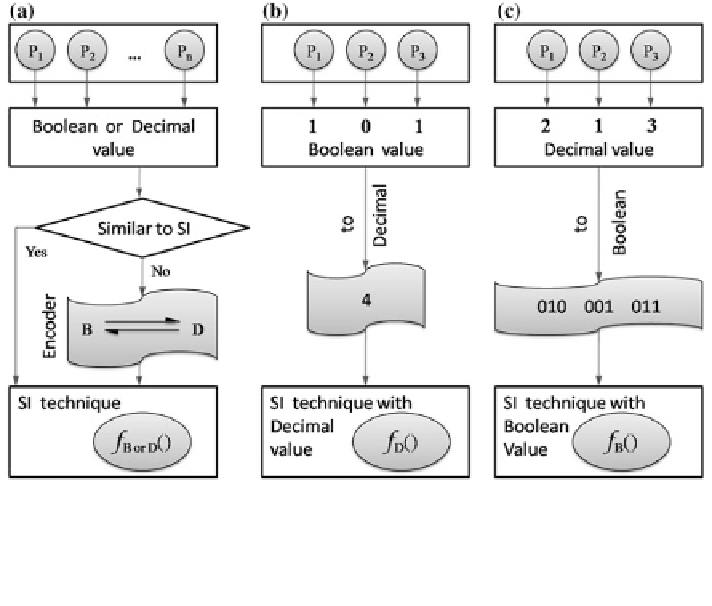Information Technology Reference
In-Depth Information
Fig. 3 Encoding mechanism of control parameters of any module of an application corresponding
to the inputs of SI technique. Encoding of Boolean to Decimal or Decimal to Boolean is presented
in (a), b shows Boolean to decimal encoding where SI technique uses decimal inputs to evaluate
objective function, and c shows decimal to Boolean encoding where SI technique uses Boolean
inputs to evaluate objective function
different strings. In part (b) of Fig.
3
shows a single string to encode into Decimal
value. When application control parameter values are Decimal, they are either defined
as continuous or discrete values within some range. Each individual value of control
parameter is encoded into Boolean value of prede
ned bit size. In part (c) of Fig.
3
shows encoding into Boolean value of bit size 3. Each Boolean string is considered as
different input to multi-dimensional objective function of SI technique or considered
as single Boolean string for uni-dimensional objective function.
Despite of different encoding schemes, it is better to consider such a SI technique
which uses similar values as control parameters of application to avoid possible
pitfalls. Though such decisions are constraint to the application. Most of the SI
techniques including PSO, ACO and GSA use Decimal representation. Even if
encoding is not needed when inputs of SI technique and application control param-
eters are similar, results obtained may not be good. Hence, strategic changes (dis-
cussed in Sect.
6
) to existing technique is adopted. In some cases require both kinds of
encoding schemes. For example feature selection problem uses both Boolean and
Decimal representation. Boolean representations are done by representing 1 if par-
ticular feature is selected and 0 otherwise. String of these binary values represented as
individual particles or solutions to the SI techniques (Chakraborty and Chakraborty

Search WWH ::

Custom Search